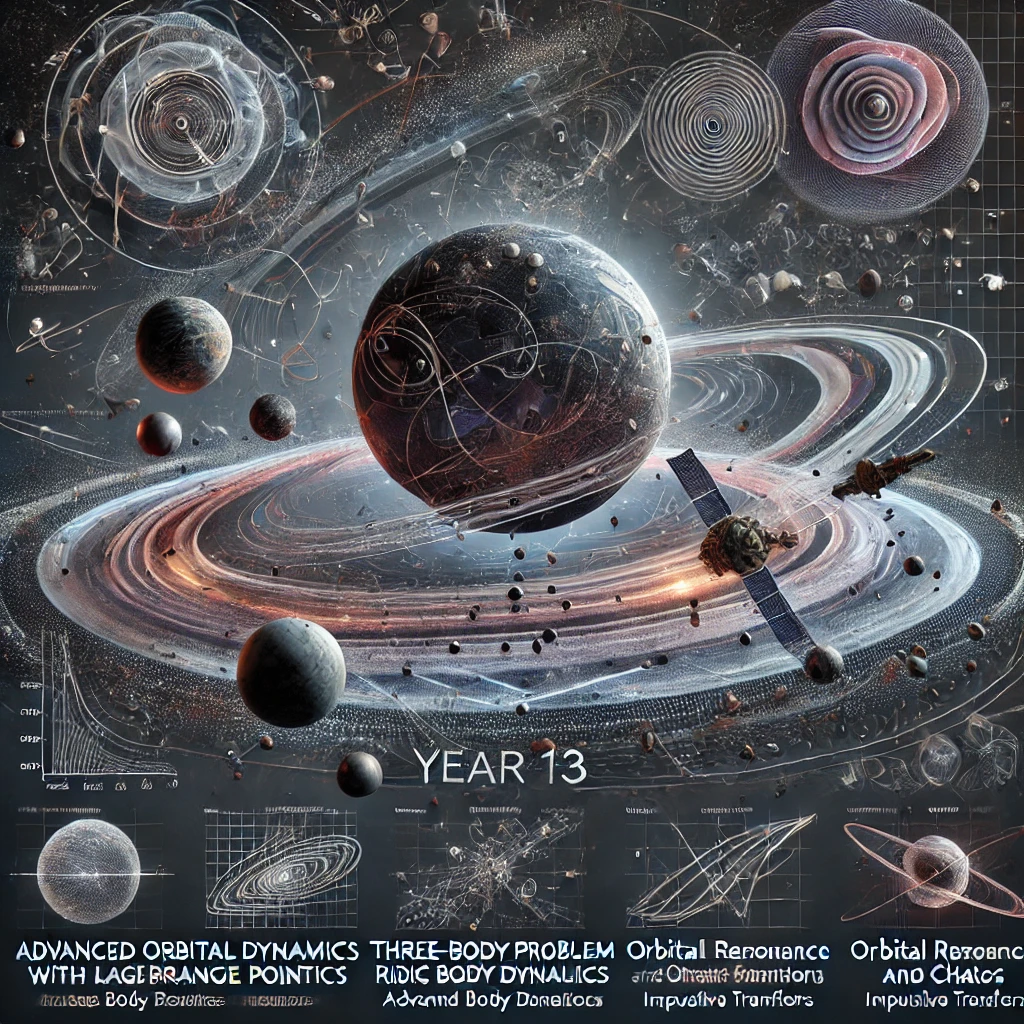Advanced Orbital Dynamics and Astrodynamics: Year 13

About Course
Course Overview: Embark on an advanced exploration of orbital mechanics, astrodynamics, and space mission design. Dive into complex trajectories, study orbital transfers, and analyze the principles of space navigation.
Course Content
Lesson 1: Three-Body Problem and Lagrange Points
-
Three-Body Problem and Lagrange Points
Lesson 2: Rigid Body Dynamics and Spacecraft Attitude Control
Lesson 3: Advanced Perturbation Methods
Lesson 4: Orbital Resonances and Chaos
Lesson 5: Orbital Maneuvering and Impulsive Transfers
Lesson 6: Optimal Control and Trajectory Optimization
Lesson 7: Gravity Assist and Interplanetary Trajectories
Lesson 8: Multi-Body Astrodynamics and Space Navigation
Lesson 9: Space Mission Analysis and Design
Lesson 10: Space Mission Operations and Anomaly Resolution
Lesson 11: Space Debris Mitigation and Sustainability
Lesson 12: Breakthrough Propulsion and Exotic Concepts
Student Ratings & Reviews

No Review Yet